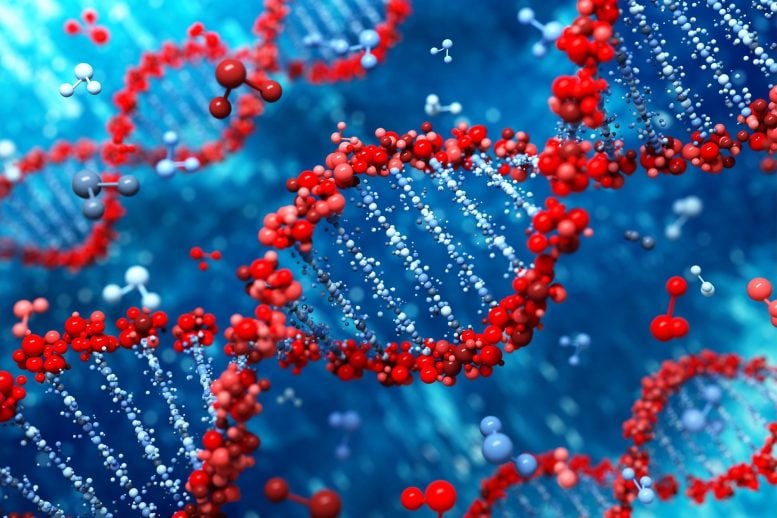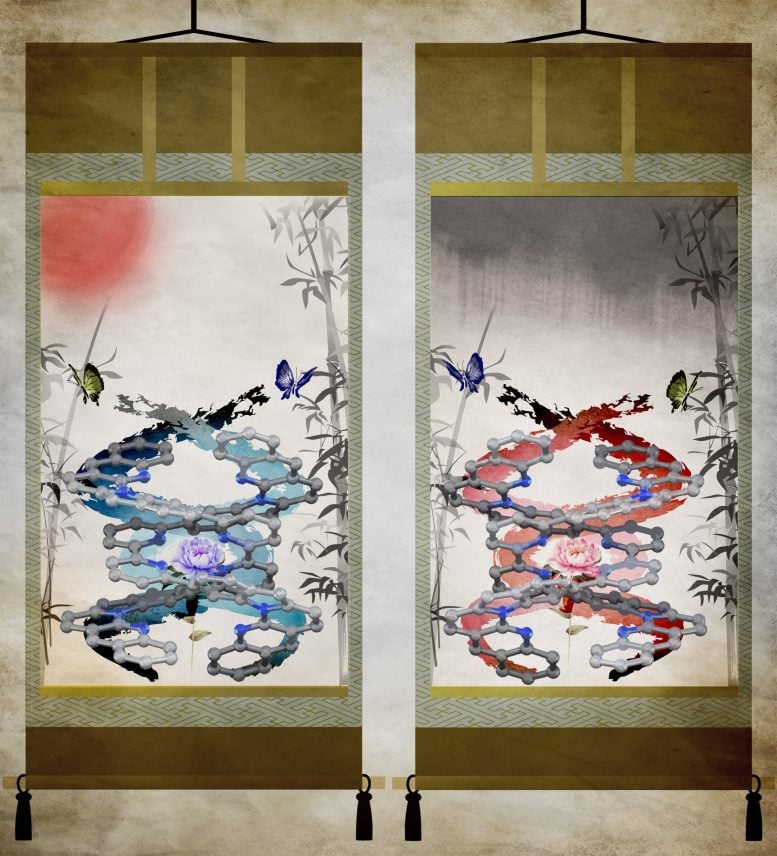
Scientists have created artificial double-helical complexes with properties that allow for controllable chirality switching.
DNA, or deoxyribonucleic acid, is the molecular system responsible for carrying genetic information in living organisms, utilizing its two helical strands to transcribe and amplify this information. Scientists are highly interested in developing artificial molecular systems that can match or even exceed the functionality of DNA. Double-helical foldamers represent one such promising molecular system.
Helical foldamers are a class of artificial molecules that fold into well-defined helical structures like helices found in proteins and nucleic acids. They have garnered considerable attention as stimuli-responsive switchable molecules, tuneable chiral materials, and cooperative supramolecular systems due to their chiral and conformational switching properties.

Double-helical foldamers exhibit not only even stronger chiral properties but also unique properties, such as the transcription of chiral information from one chiral strand to another without chiral properties, enabling potential applications in higher-order structural control related to replication, like nucleic acids. However, the artificial control of the chiral switching properties of such artificial molecules remains challenging due to the difficulty in balancing the dynamic properties required for switching and stability. Although various helical molecules have been developed in the past, reversal of twist direction in double-helix molecules and supramolecules has rarely been reported.
Breakthrough in Double-Helical Monometallofoldamers
In a breakthrough, a team of researchers from Tokyo University of Science, Japan, led by Professor Hidetoshi Kawai from the Department of Chemistry, Faculty of Science, and including Mr. Kotaro Matsumura from the Department of Chemistry, developed a novel mechanical motif, called double-helical monometallofoldamers with controllable chiral switching. Prof. Kawai explains, “In this research, we succeeded in synthesizing a double helical mononuclear complex bridged with a single metal cation in the center of the helices to balance both stability and dynamic properties. These structures can undergo inversion switching by changing the left and right winding directions of both helix strands using different solvents.” Their study was published in the Journal of the American Chemical Society on July 19, 2024.
The researchers synthesized the double-helical monometallofoldamers from two bipyridine-type strands with L-shaped units, which after forming a complex with a zinc cation formed double-helical structures. X-ray crystallography revealed the double-helical structures with a metal cation in their center. The researchers investigated the switchability of monometallofoldamers in response to external stimuli and found that helix terminals of the double-helical form can unfold in solutions, resulting in the open form, favored at high temperatures, and refold to the double-helical form, favored at low temperatures.
Helicity Control and Potential Applications
Interestingly, the helicity of the double-helical monometallofoldamer with chiral chains can be controlled in response to achiral solvents. For example, in non-polar solvents (toluene, hexane, Et2O), it becomes left-handed or M-form, and in Lewis basic solvents (acetone, DMSO), it becomes right-handed or the P-form. The conformation of chiral chains introduced into the helix strands was found to be important for this M/P switching. Furthermore, they found that when a helix strand with chiral chains is mixed with a strand without chiral chains, the winding direction of the helix is transmitted and amplified to the achiral strand without chiral chains, with the helicity inversion ability maintained.
Emphasizing the significance of this new molecule, Mr. Matsumura says, “Our synthesized double-helical monometallofoldamers has the potential to be applied to new switching chiral materials that output diverse chiral properties by small inputs and can be used to develop chiral sensors. In addition, we expect that this novel molecular structure will lead to facilitate the genesis of deracemized and organized supramolecular systems as those found in nature by transmitting and amplifying their superior chiral properties.”
Overall, this study marks a significant step towards realizing artificial controllable double-helical structures, paving the way for novel high-order molecular systems and molecular information processing.
Reference: “M/P Helicity Switching and Chiral Amplification in Double-Helical Monometallofoldamers” by Kotaro Matsumura, Keigo Kinjo, Kotaro Tateno, Kosuke Ono, Yoshitaka Tsuchido and Hidetoshi Kawai, 19 July 2024, Journal of the American Chemical Society.
DOI: 10.1021/jacs.4c06560
The study was funded by the Japan Society for the Promotion of Science and the Japan Science and Technology Agency.